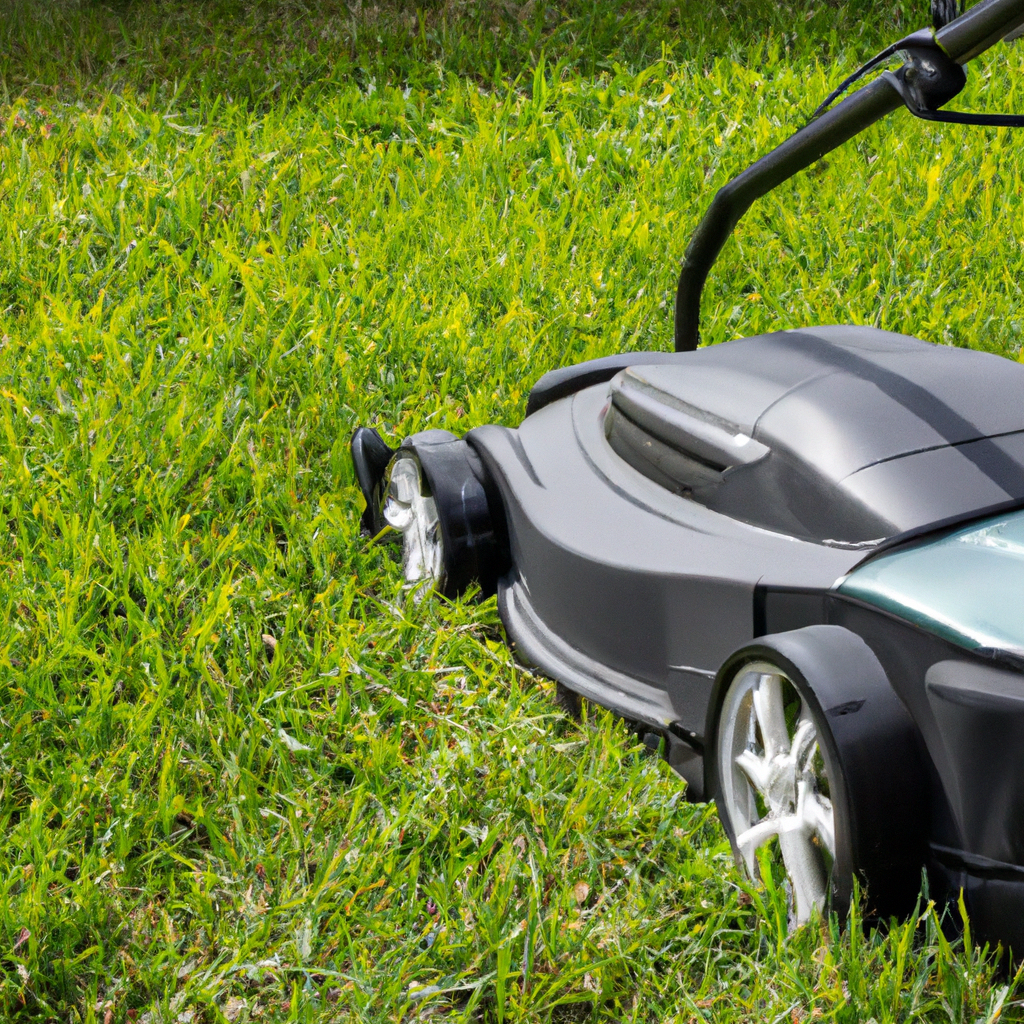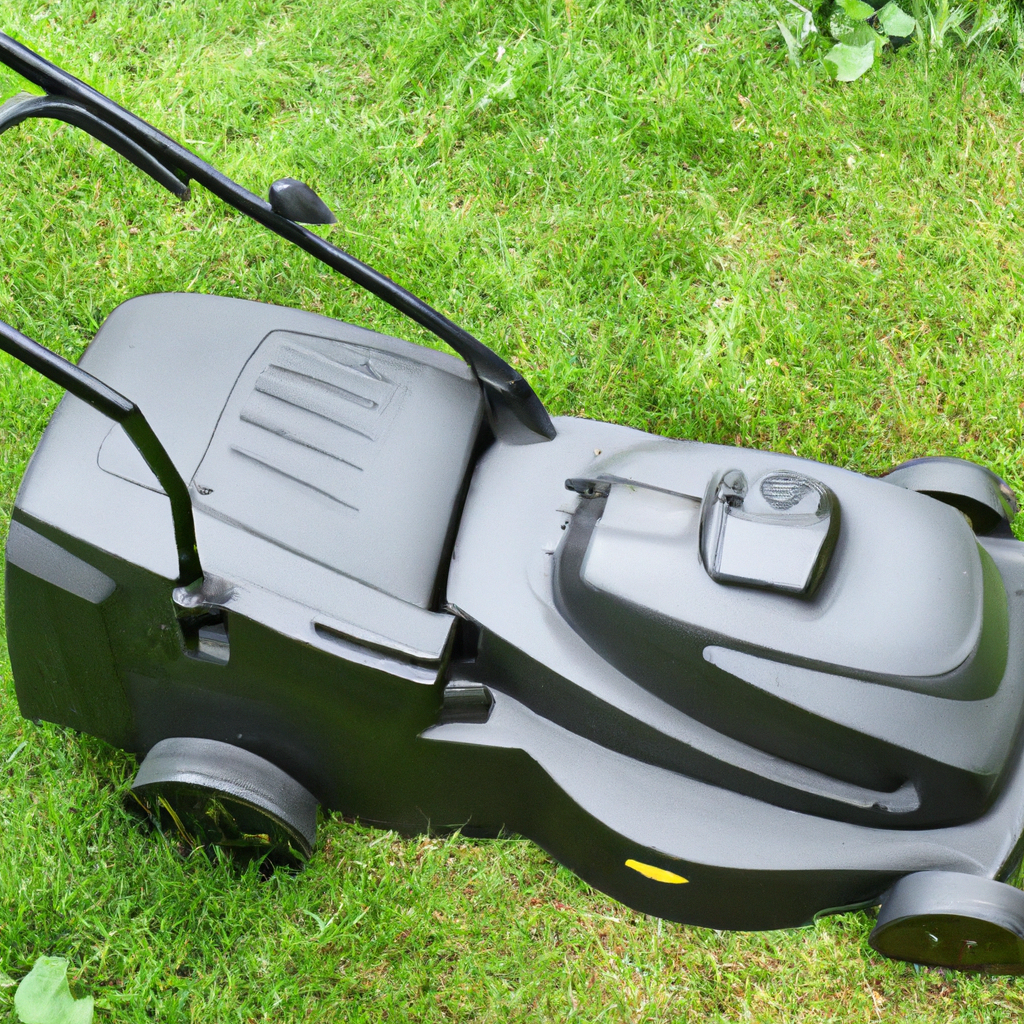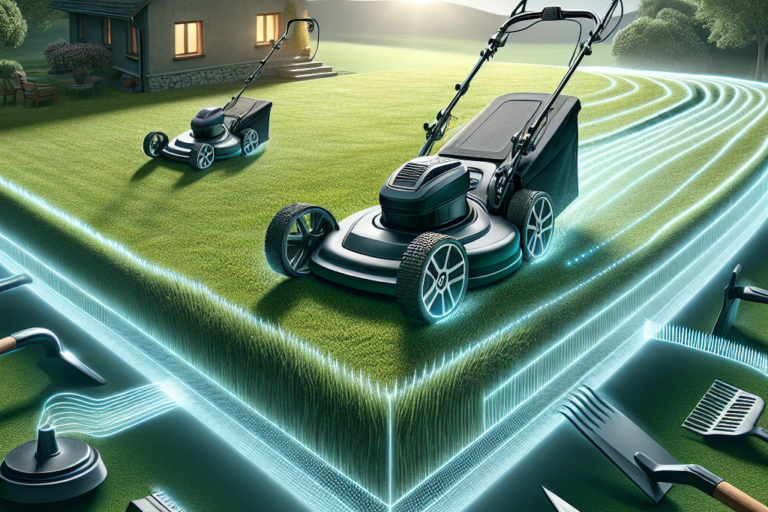You won’t have to break a sweat or struggle with a pull-start engine anymore, thanks to the wonders of technology. Electric lawn mowers have become an increasingly popular choice for homeowners looking for an eco-friendly and hassle-free way to keep their lawns looking immaculate. But here’s the burning question on everyone’s mind: can electric lawn mowers handle tall grass? In this article, we will uncover the truth and provide you with all the insights you need to make an informed decision about whether an electric lawn mower is up to the task of tackling those overgrown areas of your yard. So, grab a drink, sit back, and let’s find out if going electric is the right choice for your lawn care needs.
Factors to Consider
When it comes to choosing a lawn mower, there are several factors to consider to ensure you make the right choice for your specific needs. Power and performance, cutting width, lawn size, and grass type are all important factors that should be taken into account.
Power and Performance
One of the first things you should consider when choosing a lawn mower is its power and performance. Electric lawn mowers are available in a range of power options, from less powerful models suitable for small lawns to more powerful ones for larger areas. It’s important to choose a mower with enough power to handle the job effectively.
Cutting Width
The cutting width of a lawn mower refers to the width of the blade and determines how much grass can be cut in one pass. A wider cutting width can save you time and effort, especially if you have a large lawn. However, if you have narrow or intricate areas in your yard, a smaller cutting width may be more suitable.
Lawn Size
The size of your lawn also plays a role in determining the type of electric lawn mower that will work best for you. If you have a small to medium-sized lawn, a corded electric mower may be sufficient. However, for larger lawns, a cordless or robotic mower may be a better option.
Grass Type
Lastly, consider the type of grass you have in your lawn. Different grass types have different growth patterns and may require specific cutting techniques. It’s important to choose a mower that is suitable for your specific grass type to ensure optimal cutting results.
Advantages of Electric Lawn Mowers
Electric lawn mowers offer several advantages over their gas-powered counterparts. Here are some of the key benefits of using an electric mower.
Environmentally Friendly
One of the biggest advantages of electric mowers is their environmental friendliness. Unlike gas-powered mowers, electric models do not emit harmful fumes or contribute to air pollution. They also do not require the use of gasoline, reducing our dependence on fossil fuels.
Low Noise Level
Another advantage of electric mowers is their low noise level. Gas-powered mowers can be quite noisy, causing disturbances to both you and your neighbors. Electric mowers, on the other hand, operate at a much quieter level, allowing you to mow your lawn without causing excessive noise pollution.
Easy to Start
Electric mowers are also much easier to start compared to their gas-powered counterparts. With just the push of a button or a simple pull of a cord, an electric mower will start up quickly and effortlessly. This eliminates the hassle of dealing with finicky pull cords or the need for priming and choking the engine.
Low Maintenance
Electric mowers require less maintenance compared to gas-powered mowers. There’s no need for oil changes, spark plug replacements, or carburetor adjustments. This not only saves you time but also reduces the overall cost of maintenance.

Types of Electric Lawn Mowers
There are several types of electric lawn mowers available on the market. Understanding the differences between them can help you make an informed decision when choosing the right mower for your needs.
Corded Electric Lawn Mowers
Corded electric mowers are powered by electricity through a cord that needs to be plugged into an external power source. These mowers provide a consistent and reliable power source, making them a good option for smaller lawns. However, the cord limits the range of motion and can be an inconvenience if you have a larger yard or obstacles to navigate around.
Cordless Electric Lawn Mowers
Cordless electric mowers, as the name suggests, are powered by rechargeable batteries. These mowers offer greater mobility and are a better choice for larger lawns or areas with obstacles. However, the battery life can be a limitation, and you may need to recharge or replace the battery during longer mowing sessions.
Robotic Electric Lawn Mowers
Robotic electric mowers are an innovative solution for maintaining your lawn. These autonomous mowers are equipped with sensors that allow them to navigate around your yard and cut grass independently. They are ideal for those who want to sit back and let the mower do all the work. However, they are more suited for smaller lawns and may struggle with uneven terrain or obstacles.
Cutting Techniques for Tall Grass
Mowing tall grass requires specific techniques to ensure an even and tidy cut. Here are some effective techniques for tackling tall grass.
Raise the Cutting Height
When dealing with tall grass, it’s important to raise the cutting height of your mower. This prevents cutting the grass too short, which can stress and damage the grass. Set the cutting height to a higher setting and gradually lower it with subsequent mowing sessions as the grass becomes more manageable.
Use a Grass Catcher Bag
When mowing tall grass, it’s a good idea to use a grass catcher bag. This will help contain the clippings and prevent them from smothering the lawn. It also makes it easier to clean up the clippings afterward.
Multiple Passes
To ensure a thorough cut, it may be necessary to make multiple passes over the same area of tall grass. This helps to evenly distribute the cutting and prevents the mower from getting overwhelmed by a large volume of grass in one pass.
Wet Grass Considerations
Mowing wet grass is generally not recommended as it can lead to clumping and uneven cutting. However, if it’s necessary to mow wet grass, consider using a mower with a higher cutting height and mowing at a slower pace to minimize the risk of clumping.

Preventing Tall Grass Issues
Regular maintenance and proper mowing techniques can help prevent tall grass issues from occurring in the first place. Here are some tips to keep your lawn looking its best.
Regular Maintenance
Regular maintenance, such as watering, fertilizing, and aerating, promotes healthy grass growth and reduces the likelihood of tall grass taking over. Following a consistent maintenance schedule ensures that your lawn remains in good condition and minimizes the chances of it becoming overgrown.
Mow Frequently
Mowing frequently can prevent grass from growing too tall and becoming unmanageable. Regularly mowing your lawn at the appropriate height encourages the grass to grow thick and healthy, creating a lush and well-maintained appearance.
Sharpen Blades
Keeping the blades of your mower sharp is crucial for maintaining a healthy lawn. Dull blades tear the grass instead of cutting it cleanly, leading to frayed ends and stress on the grass. Regularly sharpening the blades ensures a clean and precise cut, preventing the grass from becoming weak and susceptible to disease.
Avoid Cutting Wet Grass
As previously mentioned, it’s best to avoid mowing wet grass whenever possible. Wet grass can clump and stick to the underside of the mower, clogging the cutting deck and inhibiting proper airflow. Waiting for the grass to dry before mowing ensures a more effective and efficient cut.
When Electric Lawn Mowers Struggle
While electric lawn mowers are highly capable machines, there are some situations where they may struggle to handle tall grass effectively. Here are a few scenarios where you may need to consider alternative methods for tackling overgrown areas.
Extremely Tall Grass
If your lawn has become extremely overgrown, particularly if the grass is significantly taller than the recommended cutting height of your mower, it may be beneficial to enlist the help of a more powerful and specialized mower or brush cutter to bring the grass down to a manageable height. Once the grass is at a more appropriate height, using your electric mower for regular maintenance should be sufficient.
Overgrown Areas
Certain areas of your lawn, such as neglected or hard-to-reach spots, may require additional attention when it comes to mowing tall grass. These areas may need to be mowed more frequently or with more care to prevent the grass from becoming overgrown. Consider using a trimmer or manual tools for precise cutting in these areas.
Weeds and Brush
Electric mowers are generally not designed to handle dense weeds or brush. If your grass has been taken over by weeds or brush, it’s best to address the underlying issue by using appropriate weed control methods or seeking professional assistance. Once the weeds have been eliminated or brought under control, you can resume regular mowing with your electric mower.
Tips for Successful Mowing
To ensure a successful mowing experience with your electric lawn mower, here are some helpful tips to keep in mind.
Choose the Right Mower
Selecting the right mower for your specific needs and lawn size is essential. Consider factors such as power, cutting width, and maneuverability to find a mower that will be efficient and effective for your lawn.
Mow During Dry Conditions
Mowing during dry conditions, such as in the morning when there is still dew on the grass or after a rain has dried, can help prevent clumping and minimize damage to the lawn. Avoid mowing when the grass is wet, as this can lead to uneven cutting and potential damage to both the grass and the mower.
Walk at a Steady Pace
Walking at a steady pace while mowing ensures an even cut and prevents missed areas or uneven trimming. Avoid rushing or walking too slowly, as this can result in an uneven appearance and make it more difficult for the mower to effectively cut the grass.
Clear the Area
Before you begin mowing, make sure to clear the area of any debris or obstacles that could potentially damage the mower or hinder its performance. Remove any large stones, branches, or toys that could get caught in the blades or cause trip hazards.
Safety Precautions
While electric mowers are generally considered safer than gas-powered mowers, it’s important to prioritize safety when operating any type of machinery. Here are some safety precautions to keep in mind.
Inspect the Mower
Before each use, inspect the mower for any visible damage or loose parts. Ensure that all safety features are functional and that the blades are sharp and properly installed. Address any maintenance or repair issues before operating the mower.
Wear Protective Gear
Protective gear, such as sturdy shoes, long pants, gloves, and safety glasses, should be worn to protect yourself from any potential hazards while mowing. It’s also a good idea to wear hearing protection, particularly when using a gas-powered mower that can produce higher levels of noise.
Avoid Steep Slopes
Electric mowers, especially cordless models, may have limitations when it comes to mowing on steep slopes. Avoid mowing on slopes that are too steep to maintain proper control of the mower. If it’s necessary to mow on a slope, use caution and ensure you have a good grip on the mower at all times.
Be Mindful of Obstacles
Pay attention to the terrain and any potential obstacles in your mowing area. Be cautious near trees, fences, rocks, and flower beds to avoid damaging the mower or the surrounding landscape. Take extra care when maneuvering around tight corners or narrow passages.
Comparison to Gas-Powered Mowers
When considering electric mowers, it’s natural to compare them to their gas-powered counterparts. Here are some key factors to consider when comparing electric mowers to gas-powered mowers.
Power and Cutting Capacity
Gas-powered mowers tend to have more raw power and cutting capacity compared to electric mowers. They are often better suited for larger lawns or areas with dense grass. However, electric mowers have come a long way in terms of power and can handle most residential lawn sizes with ease.
Noise and Air Pollution
Gas-powered mowers are notorious for their noise and air pollution. They can be considerably louder than electric mowers and emit harmful fumes. Electric mowers, on the other hand, operate at a much lower noise level and produce zero emissions, making them a more environmentally friendly option.
Maintenance Requirements
Electric mowers have fewer maintenance requirements compared to gas-powered mowers. With no need for oil changes, spark plug replacements, or carburetor adjustments, electric mowers are generally easier and less expensive to maintain. Gas-powered mowers require regular oil changes, filter replacements, and periodic tune-ups.
Cost Considerations
Gas-powered mowers tend to have a higher upfront cost compared to electric mowers. Electric mowers may have a higher initial investment due to the cost of batteries or corded models with higher power capabilities. However, over time, electric mowers generally have lower operating costs, as they do not require the ongoing purchase of gasoline or oil.
Conclusion
In conclusion, electric lawn mowers are capable of handling tall grass with proper technique and maintenance. Factors such as power and performance, cutting techniques, and the type of mower you choose all play a role in achieving an optimal cut. While electric mowers may have their limitations in extremely overgrown areas or in the presence of dense weeds and brush, they offer numerous advantages such as being environmentally friendly, quiet, easy to start, and low maintenance. By following the recommended cutting techniques, staying on top of regular maintenance, and taking necessary safety precautions, you can effectively maintain tall grass and achieve a well-groomed lawn using an electric mower.



